Top 10 Incredible Natural Wonders in Iceland 2023/2024
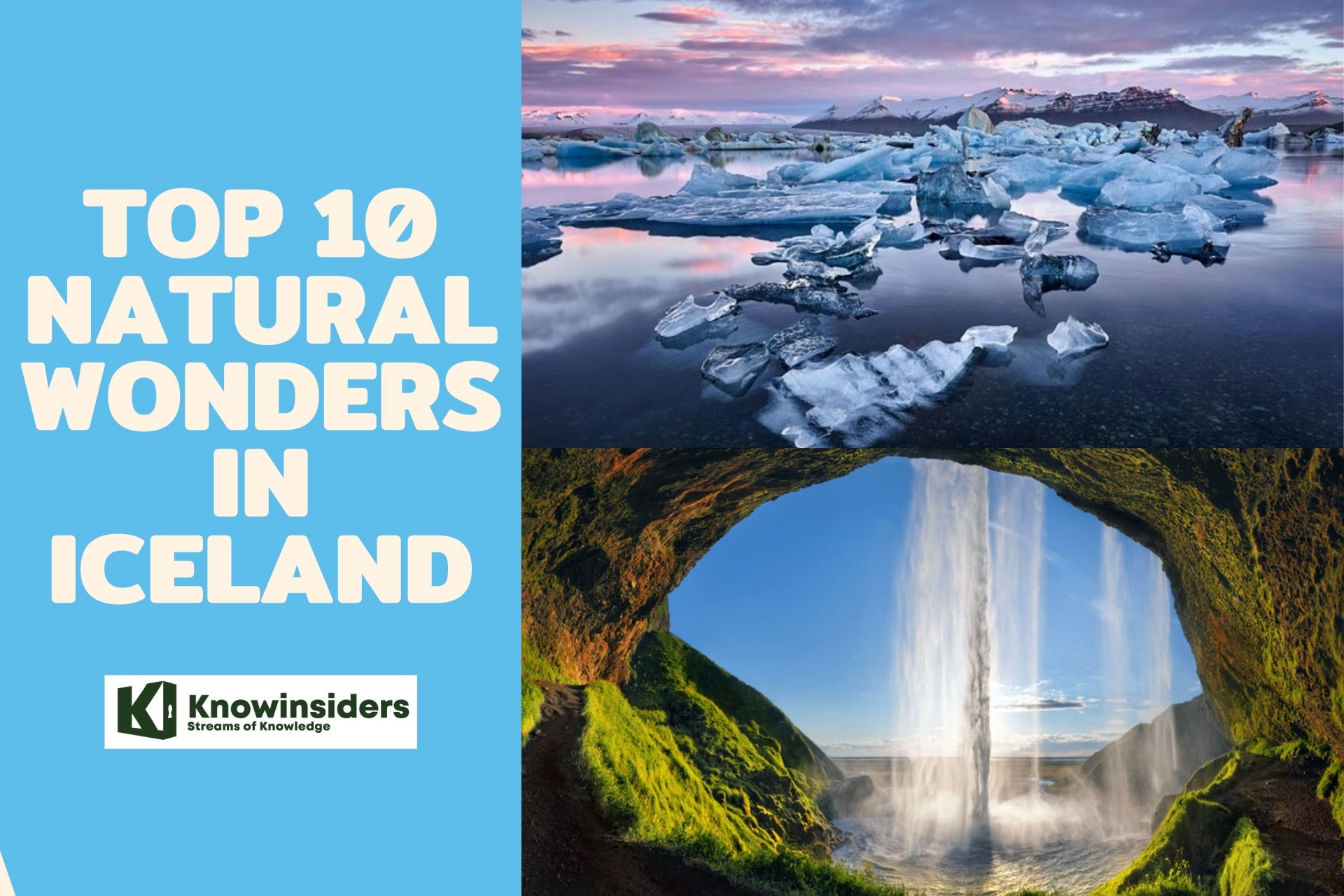 |
| Contents |
Iceland is a land of natural wonders where you can explore and experience some of the most unique and incredible attractions. From hot geysers to volcanic landscapes to the Northern Lights, Iceland has a lot to offer to tourists.
Iceland's nature is easily the highlight of the entire country. The island features glittering glacier lagoons, bubbling hot springs, and powerful waterfalls – illuminated each season by either the Northern Lights or the Midnight Sun.
What Are The Top Natural Wonders in Iceland?
1. Iceland Northern Lights
 |
| Photo: Travel + Leisure |
Just as there is a natural wonder below sea level there is also one above it, in the sky. The Northern lights, more scientifically called the Aurora Borealis, is a natural phenomenon which marks the seventh natural wonder of the world. The Aurora appears as a light show of beautiful dancing colours - usually greens blue and purples - when electrically charged particles caused by sun flares or extreme sun activity reach the gaseous particles found in the Earth’s atmosphere. The result is a moving and awe-striking rainbow of moving color that has to be seen to be truly taken in. This is a natural wonder as it is a striking example of how a naturally occurring phenomenon - such as a sun flare - can result in a beautiful event on Earth.
Generally the northern lights can be seen more clearly and frequently closer to the Arctic Circle. Polar regions have some of the most phenomenal displays, especially as light pollution from cities is virtually nonexistent there. However, the aurora can be seen in several countries including the US state of Alaska, large sections of northern Canada, as well as Iceland, Greenland, Norway, Sweden and Finland.
Each of the seven wonders offers a different look at a natural phenomenon that has occurred or continues to occur on Earth. By reflecting on these wonders, we can help to appreciate the beauty around us, as well as marvel at the stunning natural phenomena around the world.
2. Blue Lagoon
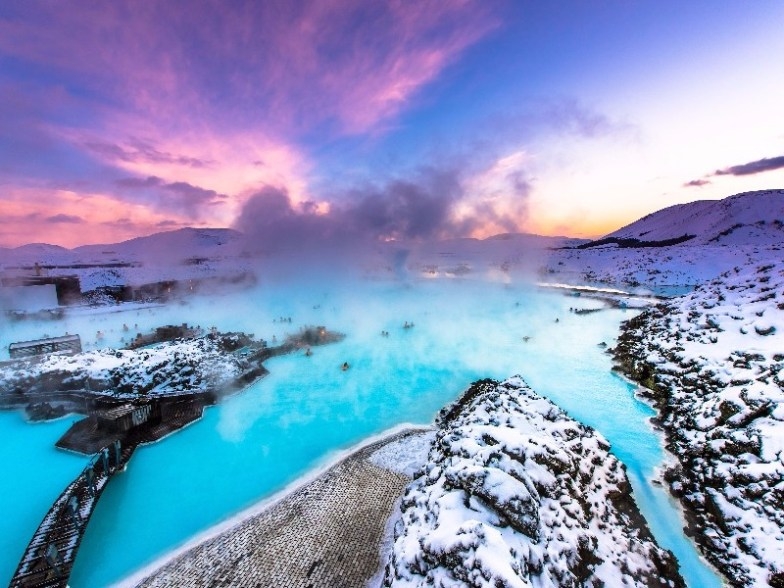 |
| Photo: Trips To Discover |
Nothing quite measures up to experiencing a hot spring soak in the middle of nowhere. Iceland has countless exotic hot springs as well as man-made geothermal pools. Both can be found in incredible locations and often offer breathtaking views.
The Blue Lagoon is the most well-known hot spring in Iceland. It has even been listed as one of the 25 Wonders of the World by National Geographic. It is a warm, milky-white lake located in the middle of a rugged lava field. Its water is a mixture of freshwater and seawater which is extraordinarily rich in silica and minerals. These unique ingredients are very good for the skin and even help some people with skin ailments such as psoriasis.
The Blue Lagoon is a world-class spa with modern facilities and many extra services such as in-water massages, a sauna, steam rooms, and a relaxation area. Other than the Blue Lagoon, there are hundreds of geothermal swimming pools all over the country with 14 located in the capital area alone.
Geothermal bathing is a huge thing in Iceland and is part of the locals’ daily life. Do not skip out on it when you visit the country!
3. Gullfoss Waterfall
 |
| Photo: The Discoveries Of |
Gullfoss Waterfall is regarded as the highlight of Iceland’s Golden Circle tour. The two-tiered waterfall is considered by many as one of the world’s top ten waterfalls. Gullfoss is unique because you can view the waterfall from above, giving the impression that it vanishes underground!
Gullfoss means “Golden Falls”, an apt name since it’s hurtling waters resemble a sun-struck golden waterfall. Its origin is Hvítá, a mighty river from Langjökull glacier, giving Gullfoss an awesome flow rate of up to 140 m3/s.
Gullfoss is special to Icelanders; a memorial stone erected here honours Sigríður Tómasdóttir who fought for its protection. In winter, Gullfoss looks gorgeous and offers you a great setting for a photo of the Northern Lights.
4. Seljalandsfoss Waterfall
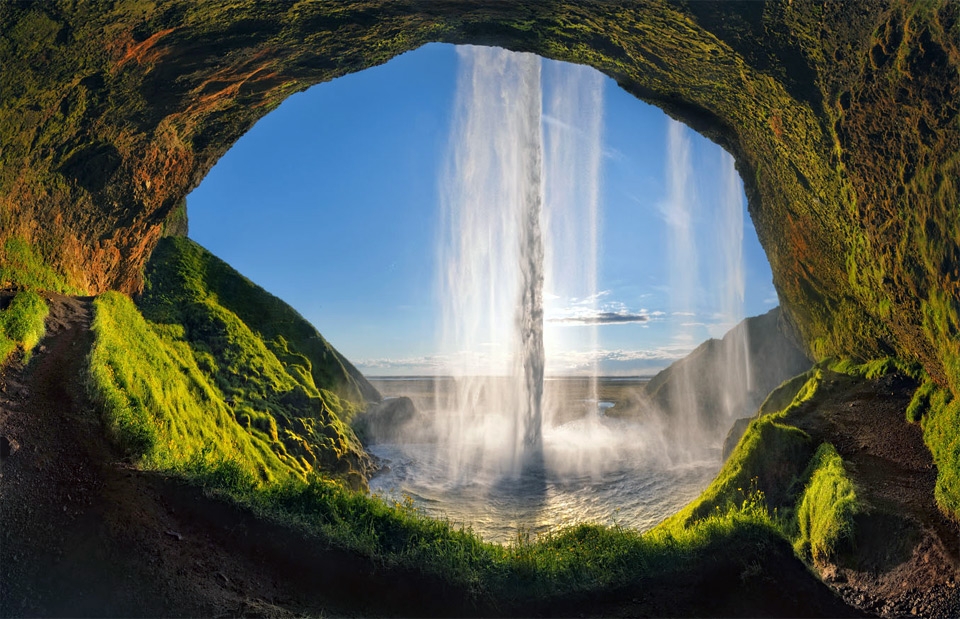 |
| Photo: One Big Photo |
Seljalandsfoss Waterfall is often cited as the “waterfall you can walk behind”. Found in Iceland’s Southern Coast, it’s fed by glacial water from the famous ice-capped Eyjafjallajokull volcano.
Plunging 60 meters over an ancient sea cliff into a pool, it’s part of Katla Geopark and flows into Seljalands River. It gushes in a misty rush, and a path behind the tumbling water provides unique views and photos. A small trail leads you to Gljufrafoss, another special waterfall that’s hidden in a canyon.
Due to its huge acclaim, floodlights light up the waterfall so it can be viewed at night too. During winter, Seljalandsfoss looks amazing and also quite alluring with icicles hanging from the cliffs.
5. Skogarfoss Waterfall
 |
| Photo: Visit South Iceland |
Skógafoss Waterfall is located on Skógá River in South Iceland, 149 km from Reykjavik. Standing 60m high and 25m wide, it’s one of the largest and most beautiful waterfalls in Iceland.
The waterfall comes directly from two glaciers, Eyjafjallajokull and Myrdalsjokull, making Skogafoss quite unique. As the water hits the ground, it produces a huge amount of spray which forms rainbows on sunny days, at times in doubles!
This is the start of the Fimmvorduhals pass, a popular hiking trail and one of Iceland’s most visited places. For stunning views of Skógafoss and South Iceland’s coastline, you can also climb to the top of the waterfall. You may visit Skógafoss all year but take caution during winter, as ice makes the area slippery.
6. Reynisfjara Black Sand Beach
 |
| Photo: World Beach Guide |
The black-sand beach Reynisfjara near Vík is backed by an incredible stack of basalt columns that look like a magical church organ, and there are outstanding views west to Dyrhólaey. Surrounding cliffs are pocked with caves formed from twisted basalt, and puffins belly-flop into the crashing sea during summer. Immediately offshore are the towering Reynisdrangur sea stacks. However, with beauty comes danger; people are regularly swept away on this beach, so be extra cautious.
7. Landmannalaugar
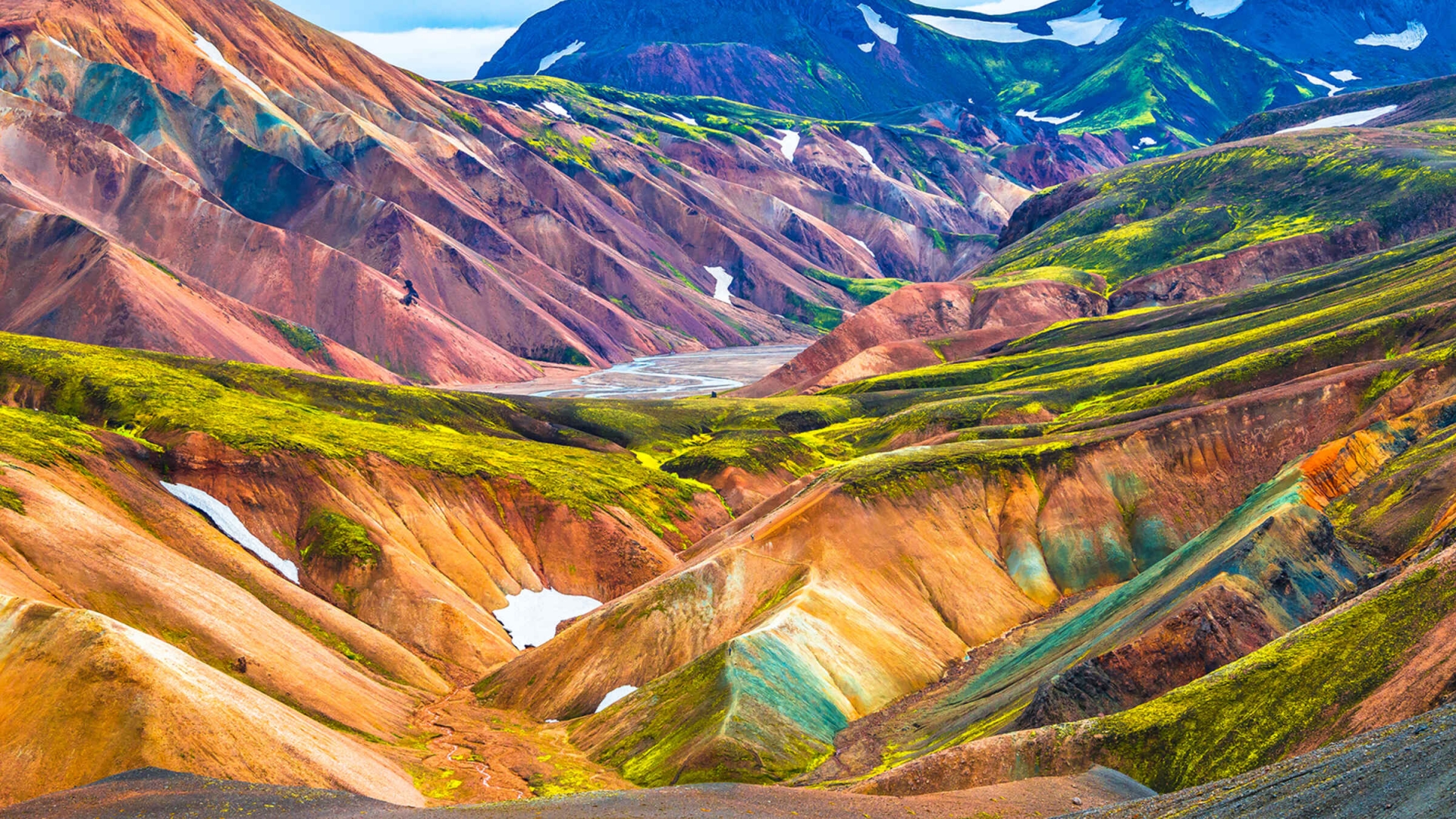 |
| Photo: GetYourGuide |
Landmannalaugar is a scenic landscape in the southern part of the island, about 175 km east of Reykjavik. This region is on the northern end of the Laugavegur hiking trail and is popular for several trails that pass through rhyolite mountains, lava fields, and hot springs.
There are several local agencies that organize hiking trips along in this region. Icelandic horse riding is also a popular activity with tourists visiting Landmannalaugar.
8. Jokulsarlon Glacier Lagoon
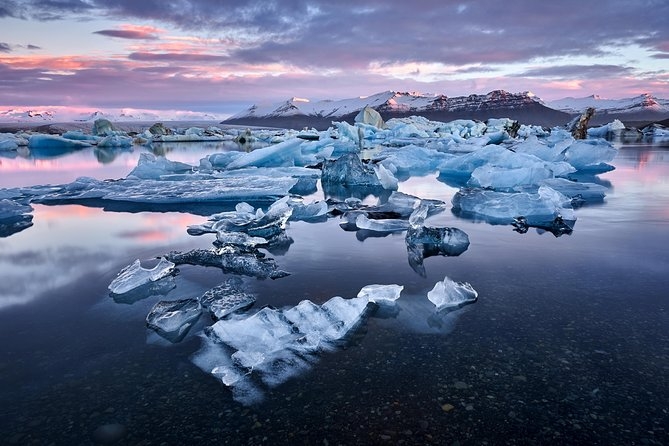 |
| Photo: Viator |
Iceland’s stunning glacier lagoons are some of the most celebrated natural wonders in Iceland, with Jökulsárlón being the largest. Referred to as the “crown jewel of Iceland” this picturesque lagoon is filled with giant opaque icebergs. Tour the lagoon up close with a Zodiac Boat Tour.
Glacier lagoons form at the tip of glacier tongues. As the ice slowly melts and retreats, it leaves a lake behind. This lake is filled with glacial meltwater and ice chunks that break off of the glacier’s tip. The icebergs can vary largely in size and shape, from small diamond-like pieces to gigantic icebergs that can be as large as 20-30 meters (65-98 feet) across. At Jökulsárlón, the lake is directly connected to the sea so the icebergs can float into the open ocean.
Located about half a mile (1 km) from Jökulsárlón is Diamond Beach, another must-visit site. This is one of the most photographed natural attractions in Iceland. You will find the giant icebergs from Jökulsárlón washed up on the shore. Pushed onto the coast by waves, the glaciers decorate the black sand like sparkling diamonds.
Whether you just want to admire the glacier lagoon from afar or go for a boat ride on the lagoon, do not miss out on seeing a stunning glacier lagoon.
9. Leidarendi Lava Caves
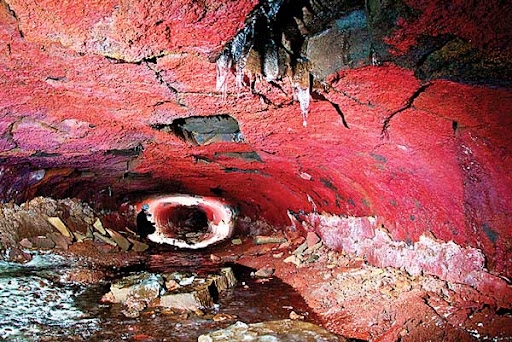 |
| Photo: DNA India |
These are actually two caves that formed after separate eruptions on the volatile Reykjanes Peninsular. The lava tube caves formed when the surface lava hardened but magma continued to flow in tunnels.
As the magma gushed out, a hollow tube remained and the caves collapsed, leaving a circular path with hidden chambers. The cave is pitch-black and you need a headlamp to see the natural beauty inside.
You will find colourful lava-stream polished cave walls, as well as stalactites, stalagmites and other rock formations. During winter, you’re also likely to see sparkling natural ice sculptures that further enhance the allure of this fantasy world.
For a memorable underground adventure, visit the lava caves with a guide to ensure a safe and enjoyable trip.
10. Hengifoss Waterfall
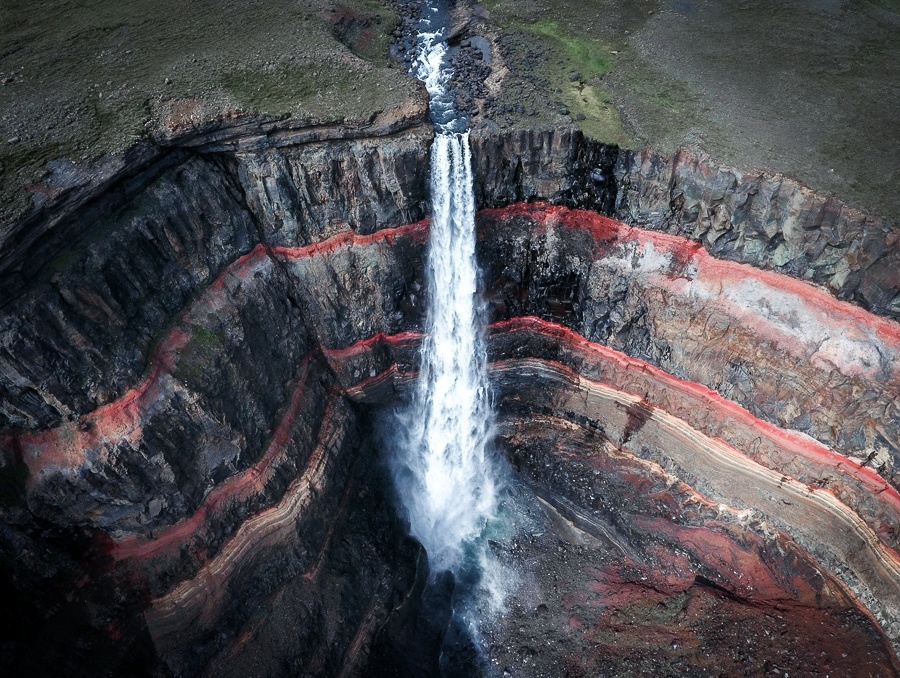 |
| Photo: The World Travel Guy |
Hengifoss, the third highest waterfall in Iceland is found in the Hengifossá River in East Iceland. It stands at an impressive 128 metres and the view of Fljótsdalur valley from above is awesome! The cliff face sports dramatic red clay and black basalt patterns that make an attractive backdrop for the gushing water.
On closer look, the landscape tells the area’s geological history as fossilised conifer and other tree-trunks confirm milder weather earlier on. You can follow a trail to Litlanesfoss, another waterfall that features amazing basalt stone columns.
The dazzling waterfall goes on to pour into Hengifossárgljúfur gorge in Fljótsdalur valley. A visit to Hengifoss is worth it since you get to see two amazing waterfalls in one hike!
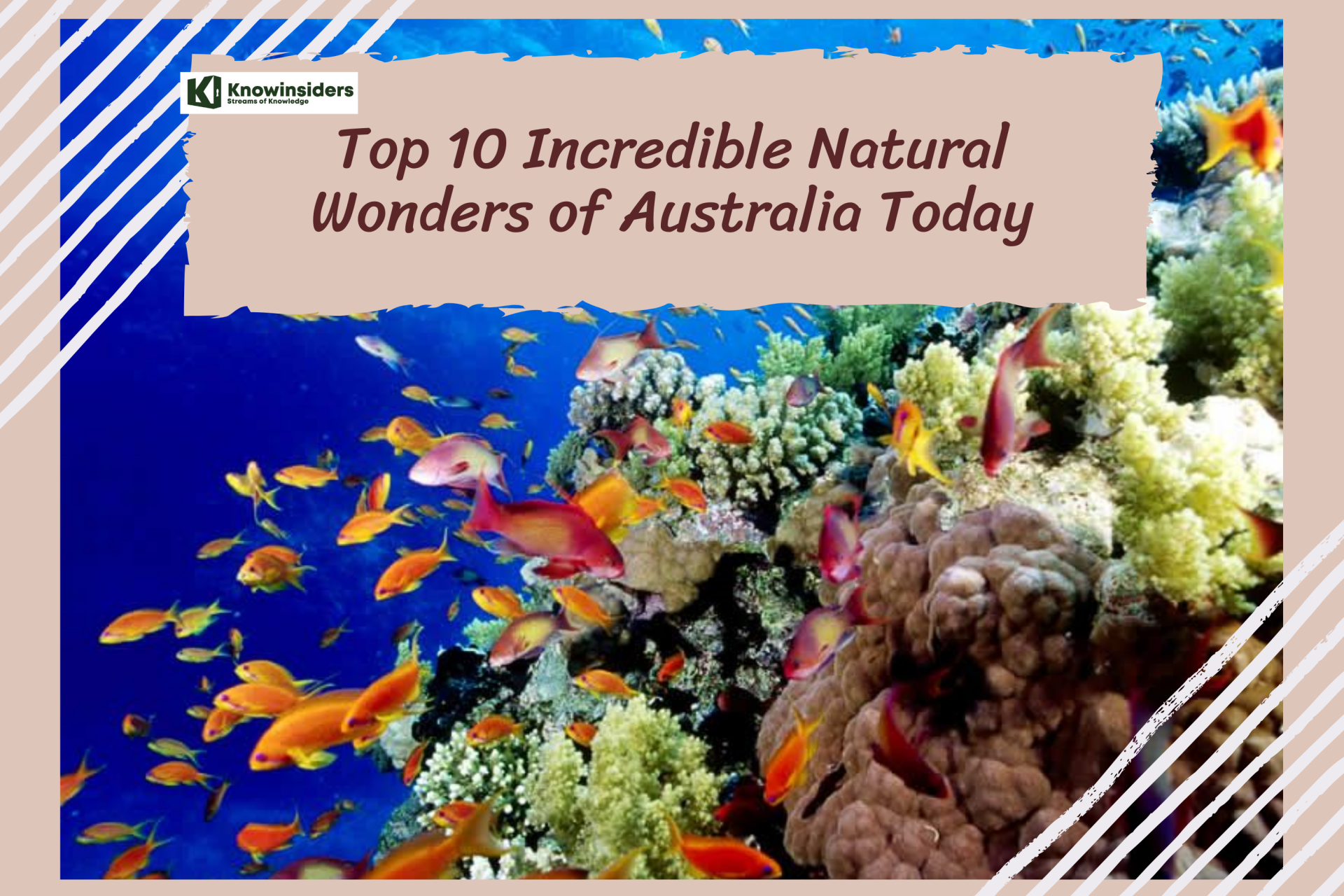 10 Incredible Natural Wonders of Australia Today 10 Incredible Natural Wonders of Australia Today Australia is full of mind-blowing landscapes and natural wonders that are perfect for outdoor adventures. |
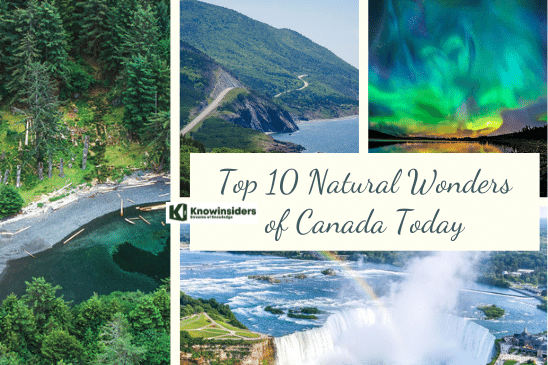 10 Breathtaking Natural Wonders of Canada Today 10 Breathtaking Natural Wonders of Canada Today Canada is one country in this world known for its beautiful and scenic landscapes. Check out the top 10 Breathtaking Natural Wonders of Canada right ... |
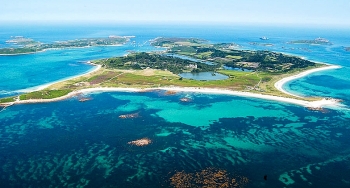 11 Incredible Natural Wonders of the UK Today 11 Incredible Natural Wonders of the UK Today The incredible natural wonders in the UK may not equal those in the US, Canada, or Australia, but the sometimes quirky, always striking sights are ... |


























